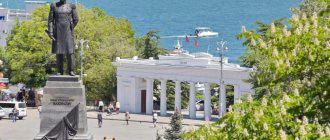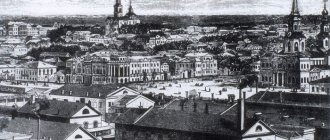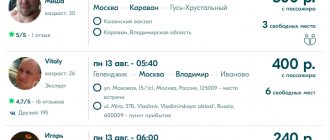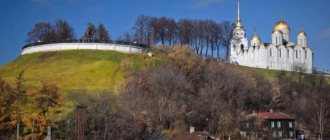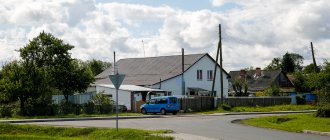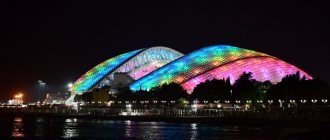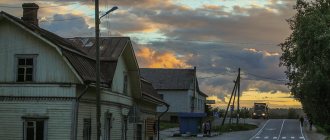Vladimir-Suzdal Museum-Reserve
Vladimir-Suzdal Museum-Reserve
Vladimir
The Vladimir-Suzdal Museum-Reserve introduces the monuments of ancient Russian architecture located in Vladimir, Suzdal, Gus-Khrustalny, Bogolyubovo, Kideksha and Muromtsevo. Among the most valuable objects are monuments of white-stone architecture of the 12th–13th centuries: the Assumption Cathedral, the Golden Gate, Demetrius Cathedral, the Suzdal Kremlin and others.
The branches of the museum-reserve in Vladimir contain unique exhibits. In the Historical Museum there is a church chasuble made from the velvet fur coat of Prince Dmitry Pozharsky, in the Trinity Church there are creations by masters of glass, artistic embroidery and lacquer miniatures, and in the “Chambers” museum complex there are paintings by Ivan Aivazovsky and Alexei Savrasov.
Vladimir
History of the city of Vladimir
The Vladimir lands have been inhabited by people since Paleolithic times. This is evidenced by stone tools found during archaeological excavations. In the 6th-7th centuries, the ancient chronicled Merya tribe lived in the surrounding forests, and on the hill where the majestic Assumption Cathedral now stands, researchers discovered a Meryan village.
Prince Vladimir I Svyatoslavovich
In the 9th-10th centuries, the Krivichi Slavs began to settle on the banks of the Klyazma. Most historians believe that the city appeared in 1108, and the Novgorod Chronicle names the name of its founder - the Russian prince Vladimir Vsevolodovich Monomakh. Some local historians are confident that Vladimir appeared earlier - in 990, thanks to Prince Vladimir I Svyatoslavich, under whom the baptism of Rus' took place. It is interesting that the version about an earlier dating of the city’s foundation was also supported by the famous Russian philologist Dmitry Sergeevich Likhachev.
Vladimir quickly grew and strengthened as a stronghold for the defense of the surrounding lands. In 1157, the prince made it the capital of the Rostov-Suzdal principality. It is known that Vladimir was raided several times by Tatar troops, with the most devastating attacks occurring in 1238 and 1293. In 1382, like other Russian settlements, the city suffered greatly from the troops of Tokhtamysh.
Vladimir was the main city in North-Eastern Rus'. He did not have his own princely dynasty, so the city was ruled by appanage princes appointed by the Horde.
After the rise of Moscow, Vladimir became a provincial town. A slight cultural and economic recovery began only in the second half of the 18th century, when the city was made the center of the governorship, and then the center of the province. In Vladimir, stone public buildings began to be built, several educational institutions, a drama theater, a printing house and a museum were created. Big changes were brought by the opening of the railway that connected Vladimir with Moscow.
Vladimir on postcards of the early 20th century
After the establishment of Soviet power, some city streets were renamed, and most parish churches were closed to believers. A little later, 6 churches and the Cathedral of the Nativity Monastery were demolished. In pre-war times, Vladimir grew rapidly and began to turn into a large industrial center.
During the Great Patriotic War, many residents from the western regions of the country were evacuated here. There were 18 hospitals in the city, and residents of Vladimir actively donated blood for the wounded.
In the post-war years, the industrialization of the city continued. In 1960, a bridge was built across the Klyazma and a residential area was erected on the right bank of the river. Since the 1970s, Vladimir has become one of the tourist centers. Today, many travelers from other cities of the country and from abroad come here to get acquainted with the history of Vladimir and see ancient historical monuments.
View of the city from the bridge over the Klyazma
Sights of Vladimir
The ancient Russian city of Vladimir is famous for its rich, centuries-old history and unique architecture. First of all, tourists tend to visit sites on the UNESCO World Heritage List.
Golden Gate
In the 12th century, Vladimir was surrounded by a rampart and had five entrance gates. Only one of them has survived to this day - the Golden ones. A unique monument of ancient Russian serf architecture is located in the historical center, on Bolshaya Moskovskaya Street, 43. The Golden Gate served as the main entrance to the city. The prince and his squad traditionally passed through them to Vladimir.
Today, inside the ancient fortress gates there is a museum of military valor. Its exhibitions are located in the gate temple. Tourists who come here can see ancient armor and weapons. Stands and display cases tell about the military feats of famous Russian commanders, and in the center of the museum there is a diorama depicting the siege of Vladimir in 1238. From Monday to Thursday the museum is open from 10.00 to 16.00. On other days it closes an hour later. The exhibition is closed on Tuesdays.
Golden Gate from Bolshaya Moskovskaya Street
View of the Golden Gate from Kozlov Val
Passage under the Golden Gate
Assumption Cathedral
The ancient Orthodox church has stood on the high bank of the Klyazma for more than 850 years. It was founded in 1158, during the reign of Andrei Bogolyubsky. The prince wanted the new temple to become the main one in all of Vladimir-Suzdal Rus', so he called the best masons, icon painters and jewelers to build it. Famous masters came to Vladimir from Kyiv, Galich, Germany and Greece.
The five-domed cathedral still remains one of the main decorations of the city. It is the tomb of Vladimir bishops and metropolitans. Inside the ancient temple you can see preserved fragments of wall paintings made by the famous Russian isographer Andrei Rublev.
Assumption Cathedral
Stone carvings on the walls of the Assumption Cathedral
Dmitrovsky Cathedral
The austere and majestic Dmitrovsky Cathedral was built later than the Assumption Cathedral - at the end of the 12th century, when Vsevolod the Big Nest reigned. The prince wanted his “personal” temple to appear in Vladimir, and at the request of the ruler, the collection was consecrated in honor of Dmitry of Thessalonica, revered by Christians.
Dmitrovsky Cathedral is a Byzantine four-pillar temple with three semicircular altar apses. It is richly decorated with elegant white stone carvings, and is often called a “poem in stone” for its beauty. Judging by the external decoration of the cathedral, we can conclude that not only Vladimir, but also Greek carvers worked on it.
The inside of the temple looks much more modest. Among the ancient frescoes, a wall painting from the 12th century, made by a Greek isographer and his Russian assistant, has been preserved.
Dmitrovsky Cathedral
Decor of the dome of Dmitrovsky Cathedral
Stone carvings on the walls of Dmitrov Cathedral
Assumption Cathedral in Vladimir
The Assumption Cathedral is a unique monument of white stone architecture of the pre-Mongol era. It was built in...
Golden Gate in Vladimir
The Golden Gate of Vladimir is a monument to ancient Russian fortification, built in 1158-1164...
Demetrius Cathedral in Vladimir
Demetrius Cathedral was built in the name of St. Demetrius of Thessalonica by Prince Vsevolod Yuryevich Bolsho...
All sights of Vladimir
Museums of Vladimir
Not far from the Assumption and Dmitrovsky Cathedrals there is a large museum complex “Chambers”. It occupies three floors of a building built in the 18th century (Bolshaya Moskovskaya Street, 58). The museum complex consists of permanent displays and exhibitions for adults and children, which introduce guests to the structure of the Russian home, the traditions of the old school, folk fairs and book printing. The “Chambers” also has an art gallery, where more than 300 paintings by artists of the 18th-20th centuries are collected. Immersion in the past begins right from the door, as all the guides and staff of the museum complex greet visitors in 19th-century costumes. The museum complex is open every day except Monday: on Tuesdays and Wednesdays from 10.00 to 16.00, and from Thursday to Sunday from 10.00 to 17.00.
In the museum complex "Chambers"
One of the city’s museums is called “Old Vladimir”. It is very easy to find because the building it occupies looks like a stylized fortress (Kozlov Val Street, 14). It's actually a converted water tower. The museum is dedicated to the history of the city of the late 19th – early 20th centuries. Here you can see what a typical Vladimir tavern and church shop, horse-drawn carriage and officer's house looked like. The walls of the halls are hung with old photographs, clippings from city newspapers and theater posters. Tourists love “Old Vladimir” for the observation deck at the top of the tower, which offers a good panorama of the city and the spacious valley of the Klyazma River. The museum is open daily, except Mondays, from 10.00 to 18.00.
The building of the museum "Old Vladimir"In one of the halls of the museum "Old Vladimir"
The land of Vladimir, rich in talent, has long been famous for its folk crafts, so since the mid-1970s, a museum of crystal, lacquer miniatures and embroidery has been opened in the Old Believer Trinity Church. It is located next to the Golden Gate, on Dvoryanskaya Street, 2. On the ground floor of the museum, objects of decorative and applied art are exhibited - glass and crystal items, as well as lacquer miniatures from the Vladimir village of Mstera. On the second floor, folk embroideries are exhibited - the famous “Mstera smooth surface” and “Vladimir seam”. The museum is open to guests from Tuesday to Sunday from 10.00 to 18.00.
To find out the most interesting details from the 1000-year history of Vladimir, many travelers go to the old building located between the Mother of God Nativity Monastery and the green Lipki Park (Bolshaya Moskovskaya St., 64). The historical museum occupies a mansion built in 1900. A rich archaeological collection from the primitive site of Sungir is kept here. In the halls of the museum you can see rare photographs and documents, ancient coins and weapons, ancient books, and household items used by the residents of Vladimir. On Monday and Thursday the museum is open from 10.00 to 16.00, and on other days until 17.00. Day off is Tuesday.
Museum of Crystal, Lacquer Miniatures and Embroidery
Historical Museum
The building attached to a two-story merchant estate of the 19th century houses the Stoletovs' house-museum. Representatives of this family left a big mark on the history of Vladimir. Members of the Stoletov family were eminent merchants, generals and scientists. The museum is open to visitors on Tuesday, Friday, Saturday and Sunday from 10.00 to 16.30, on Wednesday and Thursday from 10.00 to 15.30. It is located opposite the Mother of God Nativity Monastery, on Stoletov Street, 3.
To learn more about the nature of the Vladimir region, it is worth planning a visit to the Native Nature Museum, which is located on Mira Street, 19, not far from the Vladimir administration building. The museum halls display stuffed animals living in the local forests. Here you can see wolves, bears, deer, wild boars, elk and lynx. It is interesting to look at the typical natural corners of Central Russia modeled in the halls - meadow, field, pond and forest. It is noteworthy that the visual exhibitions are complemented by the sounds of nature - birdsong, animal cries and the buzzing of insects. You can get to the museum from Tuesday to Friday from 10.00 to 17.00, and on Saturdays and Sundays from 10.00 to 16.00.
Those who are partial to Russian pastries should go to Bolshaya Moskovskaya Street, 40, where the Vladimir Gingerbread Museum is located. The private collection is housed in a building erected at the end of the 18th century and tells about the traditions of making Russian gingerbread. Master classes are held for museum guests, during which everyone can try to paint a printed gingerbread. Here, in the store they sell delicious souvenirs. The museum is open seven days a week: on weekdays from 9.00 to 19.00, and on Saturdays and Sundays from 10.00 to 20.00.
Stoletov House-MuseumIn the “Native Nature” Museum
Vladimir Gingerbread Museum
The active development of tourism was one of the reasons for the appearance of another private museum dedicated to spoons in Vladimir. It is located opposite the Northern Trade Rows, at number 4 on Oktyabrskaya Street. In the museum display cases you can see the products of spoon makers who made spoons for the court of the Russian emperors, spoons as gifts, as well as spoons that were used for church ceremonies. The museum's collection contains not only Russian spoons - many souvenirs brought from other countries are exhibited here. The museum doors are open from 11.00 to 19.00 on any day except Monday.
Spoon Museum
Spoon Museum
In Vladimir there is an open-air museum dedicated to railway transport. Near Vokzalnaya Square, passenger and freight cars for narrow-gauge railways are displayed, and next to them stands a steam locomotive of the L series, produced in the middle of the last century.
In the historical center, on Bolshaya Moskovskaya Street, 26, an interactive fairy tale museum “Babusya-Yagusya” is open for children. About a hundred images of one of the main heroines of folk tales, Baba Yaga, are stored here. On the shelves of the museum are paper and clay fairy-tale “old ladies”, as well as figurines made of metal, wood and wax. To prevent children from getting bored, they are accompanied by actors dressed in costumes of Kikimora and Koshchei the Immortal. The fairy tale museum welcomes guests every day from 10.00 to 22.00.
At the Babusya-Yagusya Museum
Where to eat
In Vladimir, and especially in the historical center of the city, there are many restaurants and cafes. Most of them are located on Bolshaya Moskovskaya and adjacent streets. It serves traditional Russian cuisine, as well as dishes from European, Mediterranean, Italian, Japanese and Caucasian cuisines. Pancakes are very popular among tourists; they can be ordered in any cafe in Vladimir.
Tasty and inexpensive food is served in the fast food cafe of the Globus hypermarket, which is located at the exit from the city towards Suzdal (Suzdalsky Ave., 28). This cafe is open from 8.30 to 23.00 from Monday to Thursday and from 8.30 to 24.00 from Friday to Sunday.
At the exit from Vladimir towards Yuryev-Polsky there is a shopping mall (Traktornaya St., 45). On the second floor of the building there is a good budget food court. You can have a good and inexpensive lunch in the “Silver Horseshoe” dining room, which is located on the second floor of the shopping center. It is open from 9.00 to 18.00.
Cafe "Abazhur"Bar "Zhiga-Bar"
Souvenirs
Travelers who want to buy souvenirs in Vladimir can do this in small shops on Bolshaya Moskovskaya Street, in specialized stores, museums, as well as in the souvenir departments of large shopping centers. Images of the coat of arms of Vladimir, the Golden Gate, the Assumption and Dmitrov Cathedrals are very popular among tourists. The city sells mugs, plates, keychains and other products with popular views of Vladimir.
Souvenir shops sell busts of famous Vladimir residents who left a big mark on the history of the ancient Russian city, wickerwork and painted ceramic dishes. Popular souvenirs are painted wooden jewelry and birch bark products.
There is a small factory in the city that produces silverware, so in Vladimir’s stores you can always see cutlery sets of spoons, knives and forks, decorative spoons with the inscription “Vladimir”, elegant culinary spatulas, silver coasters for cups and neat napkin rings.
One of the ancient local crafts is embroidery. Beautiful products with colored “Vladimir seam” and Mstera white satin stitch are sold not only in souvenir shops, but also in large department stores. These are bed linen sets, pillowcases, napkins, towels and clothing items.
Among the “delicious” souvenirs from Vladimir are fragrant Pokrovsk gingerbreads, chocolate and chocolate candies. If your trip occurs in the summer, it’s worth looking for the famous Vladimir cherry tree. Local gardeners grow berries of excellent quality, which are distinguished by their juiciness, dark color and slight sourness.
At the souvenir shop
Souvenir ceramics
Souvenirs at the Gingerbread Museum
Transport
The historic city center is quite compact and easy to get around on foot. In Vladimir there are 8 trolleybus routes and 30 bus and minibus routes. Public transport starts running around the city from 5.30 am. On those routes on which, in addition to the number, the letter “C” is indicated, large-capacity buses travel, intended for preferential travel on a single social travel card.
Suburban buses connect Vladimir with other cities and villages in the region. By buses No. 3C, 18C, 53, 102, 107 and 152 you can get to Bogolyubov, near which is the famous Church of the Intercession on the Nerl.
If you wish, you can always take a taxi in Vladimir by stopping the car on the street or ordering it by phone. Competition among drivers is high, so when a taxi is called, it arrives very quickly.
Accommodation
Vladimir is aimed at tourists, so many hotels of different levels have been built in the city - from luxury hotels to inexpensive hostels. Conveniently, full information about options for where to stay and prices can always be obtained from the information desk at the railway station or from any of the travel agencies in Vladimir. You can also book a hotel room in advance using the Booking.com service, which will be especially important during the height of the tourist season.
Hotel "Vladimir"Hotel "Vladimir"
Several hostels offering accommodation from 400-500 rubles per night are located in close proximity to the train station. In addition to hostels, Vladimir guest houses, recreation centers and tourist centers offer budget rooms. Those who travel with the whole family or in the company of friends prefer to rent apartments for daily rent in Vladimir.
Booking.com
How to get there
Vladimir is located 190 km east of Moscow. There are different ways to get to this city. The journey by car takes about 3.5-4 hours. Motorists should take into account that the section of the M-7 Volga highway from the capital to Balashikha is almost always “stopped”, and instead of 25-30 minutes it takes about an hour to overcome it.
A simple and economical option is to get to Vladimir by train. Every day, more than a dozen electric trains and long-distance trains depart from Kursky Station in the desired direction. Some of them are direct, and some go to Nizhny Novgorod and make an intermediate stop in Vladimir. The journey takes from 1 hour 39 minutes to 3 hours 35 minutes. The fastest trains are “Lastochka” and “Strizh”. Conveniently, the railway station in Vladimir is located near the historical center of the city.
Some people prefer to come to Vladimir by buses that depart from the bus station near the Shchelkovskaya metro station. Regular buses start running from 6.00. Depending on traffic, the journey by bus takes from 3 to 5 hours. Regular buses also run to Vladimir from Yaroslavl, Ivanovo, Murom, Gorokhovets, Pereslavl-Zalessky, Alexandrov and some other Russian cities.
Cathedral of the Assumption of the Blessed Virgin Mary
Cathedral of the Assumption of the Blessed Virgin Mary (Theotokos Cathedral…
Vladimir region
The first stone building of the Assumption Cathedral was built in 1160 by the decision of Prince Andrei Bogolyubsky. In 1185, the cathedral was damaged by fire - then it was significantly rebuilt by the masters of Prince Vsevolod the Big Nest. In the 15th century, the temple building became a model for the construction of the Assumption Cathedral of the Moscow Kremlin.
In the Assumption Cathedral, a large composition of “The Last Judgment” of 1408, painted by Andrei Rublev and Daniil Cherny, has been preserved. Here are the most valuable frescoes - “Abraham’s Bosom”, fragments of “The Descent of the Holy Spirit”, “Baptism”, “Transfiguration” and other famous images.
Kovrov is large within the region
On the second line of the list is Kovrov, where half the population lives than in the regional center. It occupies the same position in the top of large ones with an area of 57.4 km². In terms of density it is on the third line with a value of 2413.8: in Murom this figure is, albeit slightly, higher. It is worth noting the presence of many suburbs, which forms a fairly densely populated urban agglomeration of about 200,000.
The settlement was founded in the 12th century by Yuri Dolgoruky: then it was considered a small village called Elifanovka. The real history began only under Catherine the Great, who gave it the status of a county town and a new name. Since then, the population has rapidly increased, the maximum jump occurred in the 30-70s of the last century.
Golden Gate
Golden Gate
Vladimir
The Golden Gate is a rare example of an ancient Russian defensive structure. The gate was built as the main military and passage building of the city fortress, which was erected in Vladimir by Prince Andrei Bogolyubsky in the middle of the 12th century. The Golden Gate was a powerful tower with a 14-meter arch. Above the vault there was a battle platform, and in the upper part of the tower there was a miniature white stone Temple of the Deposition of the Robe.
Despite fires and enemy raids, the appearance of the Golden Gate remained unchanged until the beginning of the 19th century. Then the building was seriously rebuilt, and the gate church was rededicated. Today, the historical building houses a branch of the Vladimir-Suzdal Museum-Reserve. Here is a diorama depicting the assault on Vladimir by the troops of Khan Batu, a gallery of “Heroes of Vladimir” and other exhibitions.
Historical information
Prince Vladimir Monomakh built a fortress on the banks of the Klyazma River in 1108. Later the settlement was named after him. The fortress was located in a protected place: the Swan River flowed in the north, and the Klyazma River with steep banks in the south. In the east and west there are ravines, distinguished by their steepness.
Vladimir’s heir, Yuri Dolgoruky, devoted a lot of time to the development of the city. During his reign, a palace and the Church of St. George the Victorious were built. Some time later, when Dolgorukov’s son Andrei Bogolyubsky was in power, the city was proclaimed the capital of all Rus'.
Large construction began in the city. First of all, it was protected by ramparts. Wooden walls were built, and there were access gates in them, with an expanded defensive ring.
But in the 38th year of the 13th century the city was burned by the Tatars. The greatness of the city was never destined to be restored. Construction proceeded at a slow pace. Soon the Russian metropolitans decided to change their residence and moved to Vladimir. But already in the 14th, both the bishop and the throne moved to Moscow.
Vladimir becomes an unremarkable city. Over the next three centuries, it was robbed many times and burned to the ground. The restoration of the city's grandeur began only at the end of the 17th century. Not only wooden but also stone houses were built. The population is almost a thousand people.
Since the 96th year of the 18th century, Vladimir has been the center of the province. The city is expanding. New cathedrals, a house for the governor and other grandiose buildings were built. Railway communication became possible in 1861.
Cathedral of Demetrius of Thessalonica
Cathedral of Demetrius of Thessalonica in Vladimir
Vladimir region
Demetrius Cathedral at the princely court was erected in 1194 by Vsevolod the Big Nest. The temple was consecrated in honor of the Great Martyr Demetrius of Thessalonica. Russian architects, as well as Greek, German and Italian masters, worked on the construction of the cathedral. Demetrius Cathedral is famous for its white stone carvings: the walls of the temple are decorated with about 600 reliefs with images of saints, animals and plants.
Today the Cathedral of Demetrius of Thessalonica is a branch of the Vladimir-Suzdal Museum-Reserve. The main exhibit of the museum is the ancient temple building itself with its interior decoration. Fragments of frescoes from the 12th century have been preserved here, including the composition “The Last Judgment.”
Vladimir in detail: original buildings
Water tower
Water tower in Vladimir / photo by S. Makhlov
The unusual structure was erected in 1912. The reservoir of the Water Tower held more than 103 thousand liters of water - a supply of 8,000 buckets.
The monument of industrial architecture resembles a fortress in appearance - arched niches like loopholes, pointed arches above the windows. When the tower was converted into a museum in the mid-1970s, the similarity was enhanced by adding a hipped roof with a weather vane.
Now there is the Old Vladimir Museum. There is an observation deck on the 4th tier, but the view from it is not the best.
- Where: Kozlov Val, 14.
- When: daily from 10:00 to 18:00, closed on Monday.
- How much does it cost: 150 rubles. for adults, 100 rub. for schoolchildren.
House of Friendship - a miracle tower in pseudo-Russian style
Teremok on Bolshaya Moskovskaya and the monument to Andrei Rublev / photo by S. Makhlov
The building became the House of Friendship ten years ago, when official delegations began to be met here and receptions were held. The building looks like a tower: keeled arches, a hipped roof with hipped roofs, and platbands.
Initially this is the building of the Vladimir City Duma. Built in 1907, it looks like its “big sister” - the Moscow Duma (an old building on Red Square, now housing the Historical Museum). The same red brick, the same pseudo-Russian style.
Where: Bolshaya Moskovskaya, 54.
Men's gymnasium with a strange flat church
Men's gymnasium / photo S. Makhlov
This provincial gymnasium (1786) seems ordinary only at first glance. The main facade is decorated with columns and a multi-step staircase. The children of nobles and officers studied history, Latin, and other sciences there.
What is unusual here is to be found at the end of the building. These are the remains of a decorative red brick belfry. The building was popularly nicknamed the “strange flat church” - it seems to float in the air, with only one of the walls pressed against the school. Previously, on this site there was a house church in honor of Alexander Nevsky for teachers and schoolchildren.
Now the building houses a Children's Art School.
Where: st. Bolshaya Moskovskaya, 35.
Red Cross - ambulance with bell tower
Red Cross Hospital in Vladimir / photo by S. Makhlov
The building, built during the First World War as a Red Cross hospital, is more reminiscent of a landowner’s estate, decorated in the style of Russian patterns.
Everything here is unusual for a hospital:
- porch-locker, similar to the entrance to the Gorokhovets merchant chambers,
- stone lace along the entire façade of the building and intricate window shapes,
- carved friezes, semicircular and keeled platbands, as in the Vladimir-Suzdal churches,
- a tall tower resembling a belfry in a bell tower.
During the Covid-19 epidemic, an infectious diseases hospital for patients with coronavirus will be deployed here.
Where: st. Gorky, 5.
Puppet Theater or People's Sobriety House
Puppet theater building / photo by S. Makhlov
The beautiful building was built in 1905 as the People's House for the Temperance Society. The imperial Ministry of Finance allocated money for the construction. Empire, Art Nouveau and Neoclassicism are mixed here - the architect Yakov Revyakin did his best.
During the revolution of 1905, revolutionaries secretly gathered in the house, held public meetings, and held rallies. And during the First World War it was given to the needs of refugees.
Now there is a puppet theater here.
Where: st. Gagarina, 7.
Coat of arms
The coat of arms of Vladimir is presented in the form of a French shield. In a red field, a lion stands on its hind legs, facing the viewer's left. It is the family sign of the Suzdal princes. The background color embodies courage, courage. The animal has an iron crown on its head.
The predator symbolizes courage, strength and generosity. With his front right paw he holds a long silver cross.
The coat of arms was adopted by decision of the Small Council of the Vladimir City Council No. 50/7 of March 17, 1992. The artistic composition dates back to the 1781 version.
Sounds and cultural life of the city
If you arrive in late May, take any bus or trolleybus from the center and go to Garden Square. At the Philharmonic box office. S.I. Taneyev you will be able to grab tickets to “Jazz-Thunder”.
Every year the Vladimir High Life Jazz Orchestra takes part in the international festival. The jazz string orchestra is led by musician and composer Andrey Shevlyakov. He did not leave to conquer the capital, he stayed here to preserve jazz in his hometown. The main thunderer at the festival is jazzman Sergei Zhilin, famous from the show “The Voice”.
Once a year, famous Moscow musicians and foreign groups gather at the Philharmonic to stage a 3-hour show with a jam-session (general improvisation of all participants).
Grab your umbrellas; for several years in a row the festival has lived up to its name. On opening day, it rains and there is real thunder.
The youth in the city are very creative. Every second person here is an artist, a young writer, a musician or former musician, a theatergoer or a dancer. We also have many young entrepreneurs who do not expect anything to change in the city, but take matters into their own hands. One of them, Vladimir Semyon, opened ReFresh in 2022, when he was 20 years old.
Photo: Anna Kandalova
Fresh juices, smoothies, blue and green matcha and delicious sweet waffles appeared in the city. A cool place where you can drink cold lemonade in the heat and hot coffee in winter. There is a summer atmosphere and smiling baristas here all year round. The place is located in the center, on the back side of the Trading Rows. Nearby there is an eco-shop “Ivan-da-Chai”. Come here for a heart-to-heart chat about health, herbs, nature, raw food and yoga with the vendors.
Are you planning to come for a few days, but don’t know what to do with work? Go to Streletskaya, 25. A day in a coworking space costs 300 rubles.
Another young entrepreneur, Grisha Orlov, created the place with a team of interested guys. They call themselves the center of urban culture and host candid exhibitions, screenings of original documentaries, musical brunches and restaurant days where you can eat delicious food for free.
Photo: Anastasia Martynova
The entire creative “elite” meets here to talk about aesthetics, the problems of humanity and just have a great time. Streletskaya, 25 is located opposite a very unusual meteorological center.
You came to Streletskaya in the evening, and there was no one there? This means that everything in the GreyWale cultural center is Vladimir-style, GW is the city’s musical abode, a rehearsal base created by local musicians.
At concerts in GV, electronic music, psychedelic and post-rock sounds, and exhibitions of young Vladimir artists are held.
Take the “eight” (circular trolleybus) and get off at the “Central Market” stop, look for the address Sacco and Vanzetti, 50. The cultural center is located in the building of a former musical instrument factory.
It's just a stone's throw from Moscow to Vladimir. The fastest and easiest way to get to the city is the Lastochka high-speed train. You will spend only an hour and forty on the road, travel 180 km for 600 rubles (the lucky ones get tickets for 200 rubles).
It’s cheaper to use the BlaBlaCar service - from 230 to 500 rubles, if you don’t mind spending 2.5–3 hours.
Come visit us for a few days to explore Vladimir from all sides.
Where to go with children in Vladimir
The hospitable city will offer a rich entertainment program for young tourists. There are many wonderful places in Vladimir that will be interesting to visit for children of any age.
Separate article: Entertainment for children in Vladimir
Da Vinci Science Museum
- Opening hours: daily, from 10:00 to 20:00.
- Ticket price: adult 350 rubles, children 175 rubles.
- Telephone.
- Website: https://www.museumvladimir.ru
- Address: st. Gagarina, 5. Transport stop “Ulitsa Gagarina”.
An excursion to a colorful museum, where almost everything can be touched with your hands, will bring many pleasant moments to the child and his parents. Here you can learn a lot of new things about the world around you, understand what chemical and physical processes underlie many natural phenomena. So, the child will be able to scream to his heart’s content and find out how much noise he makes in decibels. Parents will be given the chance to feel like ancient gods, spewing lightning... albeit with the help of a Tesla coil. They also offer to take pictures against the backdrop of three-dimensional paintings, take part in laser battles, and much more.
Museum "Babusya-Yagusya"
- Opening hours: daily, from 10:00 to 22:00.
- Ticket price: adult 150 rubles, children 100 rubles.
- Phone: +7 492 232‑22-11.
- Address: st. Bolshaya Moskovskaya, 26. Transport stop “Spasskaya Street”.
It’s worth visiting the museum with the whole family, because sometimes it’s also useful for adults to plunge into the world of a fairy tale. Accompanied by colorful guides - Koshchei the Immortal and Kikimora, visitors take a tour of three halls. Their exhibitions are dedicated to the terrible, but, in its own way, charming Baba Yaga. Here you can see more than 70 sculptural incarnations and artistic depictions of the heroine of many Russian fairy tales. At the end of the excursion, the surprisingly hospitable Baba Yaga will treat visitors to pies and delicacies. Children will be offered delicious sbiten, and parents will be treated to liqueur and mead.
Central Park of Culture and Culture
- Opening hours: daily, from 10:00 to 23:00.
- Telephone.
- Website: https://www.park33.rf
- Address: st. Mira, 36A. Transport stop "Central Park".
Be sure to take your child to a wonderful park where it’s easy to have a great day with the whole family. Teenagers can go on a variety of rides, rent bicycles or roller skates. There are swings and attractions for children. And, of course, don’t miss the opportunity to see Vladimir from a bird’s eye view. The Sky 33 Ferris wheel, with a diameter of 50 m, is considered one of the largest in the country. The attraction's insulated, air-conditioned cabins offer breathtaking panoramic views. In the evenings, when the lights turn on, the wheel looks grandiose.
Read about the attractions
- Suzdal, Murom, Kursk, Bogolyubovo,
- Tver, Lipetsk, Belgorod, Petushkov,
- Ivanovo, Orel, Kostroma, Kidekshi, Alexandrov,
- Bryansk, Tula, Vyaznikov, Kaluga, Kolchugino,
- Voronezh, Kirzhach, Yuryev-Polsky,
- Tambov, Sudogda, Ryazan and Smolensk.
A trip to an amazing city will be a wonderful option for a vacation. An inquisitive tourist interested in the history of Russia will return from a trip with a baggage of amazing impressions from exploring the colorful sights of Vladimir.
Russian Alcatraz
Thanks to Mikhail Krug, the whole of Russia learned about Vladimir - and not only: the song “Vladimir Central” was heard in Italy, Spain, the Netherlands and Portugal.
Until now, the author’s out-of-town acquaintances, when mentioning the city, hum the line: “Vladimir Central, north wind...”. In Tsarist Russia and Soviet times, prison was intended for political prisoners. Thus, since 1953, the youngest son of Joseph Stalin, Vasily, was kept here. Rumor has it that no one has ever escaped from here except Frunze. But in fact he escaped from the courthouse.
Central is not the only reason to visit Vladimir.
History over the past 50 years
In the spring of 1971, the Moscow-Vladimir electric train made its first flight, and 5 years later a new railway station opened in the city. This, as well as its inclusion in the route of the Golden Ring of Russia and the construction of the Zarya, Klyazma hotel complexes, etc., contributed to the development of tourism.
In the 1980s, housing construction began at an active pace in Vladimir.
After the collapse of the USSR, the city experienced a deep economic crisis associated with the general situation in the country. Today the situation in Vladimir has improved. This is due to the repurposing of some enterprises and the increased demand for tourism services.
Disputes related to the year of Vladimir's founding
At the end of the last century, local historians began to argue that the generally accepted date for the founding of the city was incorrect. In their opinion, the year 990 should be considered the year of the first foundation of Vladimir. To substantiate their statement, they cited records present in the Suprasl, Nikon, Lvov, Gustyn, Ermolin and Kholmogory chronicles. All these texts indicate that the city of Vladimir was founded by Vladimir Svyatoslavich at the end of the 10th century. This alternative dating was also supported by the famous philologist, academician D. S. Likhachev.
In addition, in 2016, Academician S.V. Zagraevsky published his scientific work, in which he convincingly showed that the city could have been founded in 990. This date was also supported by the Vladimir administration.
Background
Before naming the year the city of Vladimir was founded, you should familiarize yourself with the background of the appearance of the Slavs in these parts.
Scientists claim that the first human settlements in these places appeared around the 1st century AD. In particular, on the territory of modern Vladimir at that time there was a settlement of one of the local Finno-Ugric tribes. Later, in the 9th-10th centuries, Smolensk Krivichi and Novgorod Slovenes appeared there. They quickly appreciated all the advantages of the local landscape, which provided natural security and inaccessibility of the settlement. In addition, the Klyazma carried its waters to the Oka, thereby connecting these territories with the most important trade route - the Volga, the forests abounded in animals, there were excellent conditions for the development of cattle breeding, and in the north-west lay a vast fertile region, perfect for agriculture.
